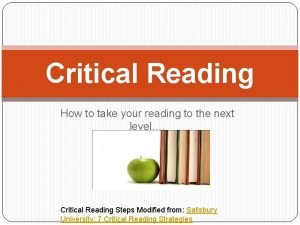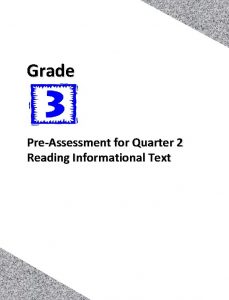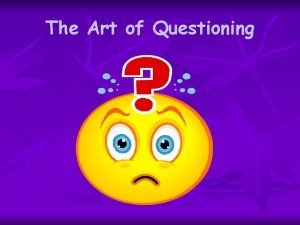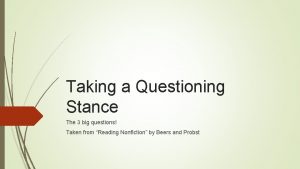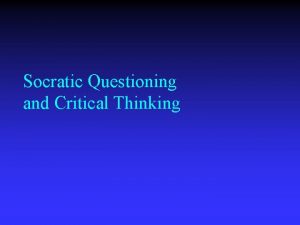Reading Rhetorically Chapter 4 Questioning a Text A







- Slides: 7

Reading Rhetorically Chapter 4 Questioning a Text A Writer’s Language and Visual Argument

Examining a Writer’s Language l l • Diction: Figurative language, syntax. Ø Connotation rhetorical effect. Ø Pay attention to language and syntax- everything is intentional and conveys meaning. Figurative Language: Ø Metaphor choice conveys argument (has rhetoric effect) Ø Equating something with a “cancer” has layers of meaning /associations for the reader. Syntax: Ø Use of punctuation to enhance rhetorical situation. Ø Commas can create pause, distance, tension. Ø Quotation marks to sarcastically label something. Ø Dashes to show author’s comment or intentional target. Ø Parentheses to insert author’s voice. Ø Question marks to question.

Examining a Texts’ Use of Visual Elements l Visual Rhetorical Appeals: How the visual works and why it is there. l Three Key Questions: 1. How does the visual element relate to the writer’s overall point or argument? Is this relationship explicit or implied? 2. How important is this visual element to the author’s argument? 3. What kind of rhetorical appeals does the visual element employ? How does it work rhetorically to influence the intended audience?

l Visual Elements as Ethical Appeals: Ø Ø Ø • Example: Photos of people to enhance ethos. A Scientist in a lab working. Goals: A person seems intellectual, caring, hardworking, approachable, sophisticated. Visuals can intentionally mislead or misrepresent audience. Three Key Questions: 1. 2. 3. How does the visual element contribute to the writer’s image, credibility, and/or authority? How does the image of the author created by the visual element influence your reading of the text? To what extent does the visual image fit the image created by the text?

l Ø Ø Visual Elements as Logical Appeals: To verify or support an author’s argument. Caution: In the technical age visuals can be manipulated! Ex: Elian photos. Two versions released. Ø One terrified boy with federal agents and gun supported claim that Elian was afraid to return to Cuba and wanted to stay in Miami. Ø One smiling Elian (released by father) supported father’s claim that he belonged in Cuba.

l Visual Elements as Audience Appeals: To appeal to audience’s emotions, values, and interests. Ø Visuals set a tone. Foster identification. Ø Evoke emotions and values. Ø • • Set the Tone: Ø Ex: Martin Luther King Jr. image in front of the Washington Monument with a throng of people. Ø Tone: serious, emotional, even religious. Identification with a Person: Ø We see a famous person or situation and we are encouraged to read the accompanying text.

l Evoked Emotions or Values: Ø Ø • Ex: starvation in Africa. Evokes compassion, sadness, guilt, and shapes our reading of accompanying text. Ex: 9/11 image of firefighters raising the flag. Evokes gratitude, patriotism, admiration (and associates it to iconic Iwo Jima image) Four Key Questions: 1. 2. 3. 4. What purpose does the visual element seem to serve in relation to the text? To which emotions, interests, and values does the visual element appeal? What assumptions are being made about readers’ values, interests, and emotions? How do specific parts of the visual element work to elicit a response? How do the parts work together as a whole? Are there other ways of reading or interpreting these elements?
 What is an example of a text-to-media connection?
What is an example of a text-to-media connection? Critical reader definition
Critical reader definition Pre reading while reading and post reading activities
Pre reading while reading and post reading activities Chapter 2 reading informational text answer key
Chapter 2 reading informational text answer key Questioning and discussion techniques
Questioning and discussion techniques Have you ever wondered questions and answers
Have you ever wondered questions and answers What is absolute language in reading
What is absolute language in reading Define socratic method
Define socratic method

